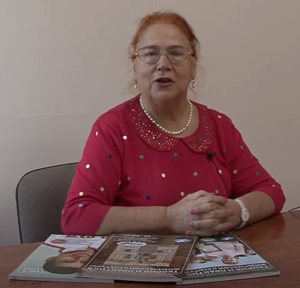Criteria for the correctness of familiar terms
ˑ:
PhD, Associate Professor A.I. Ryabchikov1
PhD, Associate Professor O.V. Zagryadskaya1
PhD, Associate Professor E.M. Chepakov1
1The Herzen State Pedagogical University of Russia, St. Petersburg
Objective of the study was to substantiate the criteria for the correctness of familiar terms in the field of physical culture and sports.
Methods and structure of the study. As a result of the analysis of popular names of directions, comparing them with direction indicators for movements in choreography, criteria for determining the directions of circles and circular movements used for more than one cycle of such movements were identified.
Results and conclusions. Since 1938, domestic gymnastic terminology, in the course of its development, has acquired a clear structure, principles and rules. The practice of using terms shows that the problem of application is not only that popular figurative expressions are used instead of system terms. In the specialized literature on terminology, there are currently no clear rules for determining the direction of circular movements. The rules given in gymnastics textbooks for indicating the directions of arcuate movements are not always applicable to circles and circular movements. The popular names of the directions of these movements, which are accepted by the majority of teachers, coaches and lovers of physical education, do not have criteria for their justification.
The authors proposed criteria for determining the directions of circular movements, as well as a new principle for determining circular movements and circles by body parts.
Keywords: system terms, principles of terminology, circles, circular movements, the top and front point of the trajectory.
References
- Brykin A.T. Gimnasticheskaya terminologiya. Gimnastika i metodika prepodavaniya: uchebnik [Gymnastic terminology. Gymnastics and teaching methods: textbook]. V.M. Smolevskogo [ed.]. 3rd ed., rev., sup. M.: Fizkultura i sport publ., 1987. pp. 28-45.
- Brykin A.T. Gimnasticheskaya terminologiya. Gimnastika: uchebnik [Gymnastic terminology. Gymnastics: textbook]. A.M. Shlemin, A.T. Brykin [ed.]. M.: Fizkultura i sport publ., 1979. pp. 23-41.
- Zhuravin M.L. Uprazhneniya na brusyakh. Teoriya i metodika gimnastiki: uchebnik [Exercises on parallel bars. Theory and methodology of gymnastics: textbook]. M.L. Zhuravin, E.G. Saykina [ed.]. 2nd ed., ster. M.: Izdatelskiy tsentr «Akademiya» publ., 2014. pp. 271-284.
- Rabil G.B. Terminologiya gimnastiki. Gimnastika. Metodika prepodavaniya: uchebnik [Terminology of gymnastics. Gymnastics. Teaching methods: textbook]. V.M. Mironov [ed.]. Minsk: Novoye znaniye publ.; M.: INFRA-M publ., 2013. pp. 34-72.
- Ryabchikov A.I. Gimnasticheskaya terminologiya na urokakh fizicheskoy kultury v shkole [Gymnastic terminology in physical education lessons at school]. Fizicheskaya kultura v shkole. 2021. No. 5. pp. 10-13.
- Savelyeva L.A. Gimnasticheskaya terminologiya. Teoriya i metodika obucheniya bazovym vidam sporta: Gimnastika: uchebnik [Gymnastic terminology. Theory and methodology of teaching basic sports: Gymnastics: textbook]. E.S. Kryuchek, R.N. Terekhina [ed.]. M.: Akademiya publ., 2012. pp. 58-72.
- Terminologiya gimnastiki i atleticheskoy podgotovki. Gimnastika i atleticheskaya podgotovka: uchebnik [Terminology of gymnastics and athletic training. Gymnastics and athletic training: textbook]. Voyennyy institut fizicheskoy kultury; A.L. Starovoytov, A.N. Kislyy [ed.]. SPb.: VIFK publ., 2019. pp. 89-92.
- Chepakov E.M. Gimnastika v shkole (podgotovitelnaya chast uroka): uchebno-metodicheskoye posobiye [Gymnastics at school (preparatory part of the lesson): study methodological guide.]. SPb.: Izdatelstvo RGPU im. A.I. Gertsena publ., 2022.136 p.



